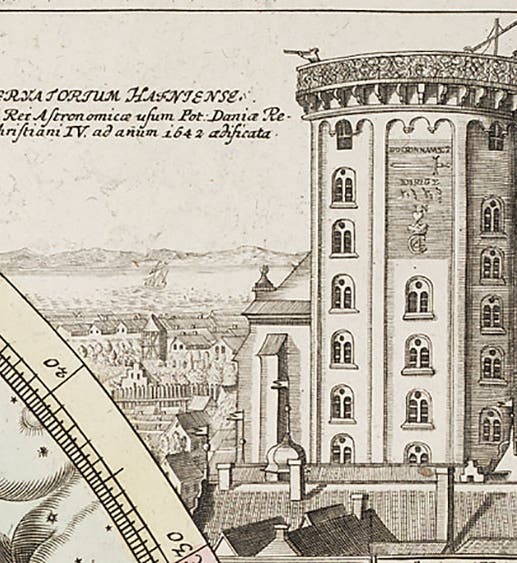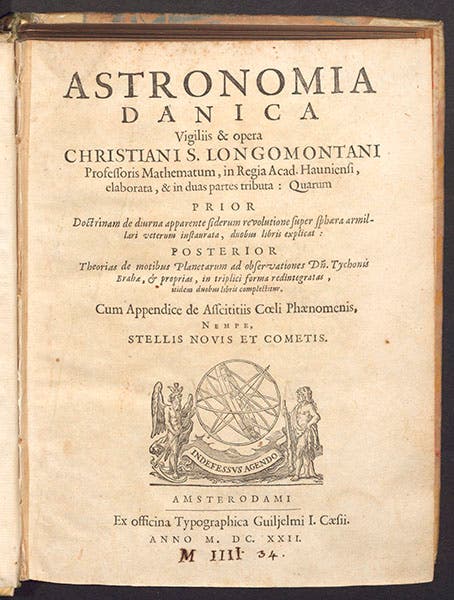Scientist of the Day - Christian Longomontanus
Christian Sørensen Longomontanus, a Danish astronomer, was born Oct. 4, 1562. Longomontanus spent 8 years working for Tycho Brahe at his observatory on the island of Hven, where he (Longomontanus) distinguished himself as a keen observer and a talented calculator. When Tycho Brahe was evicted from Hven in 1597 and slowly wended his way to Prague, Longomontanus declined to go along, in spite of Tycho's pleading. Eventually he did make it to Prague, in January of 1600, just two weeks before the young and inexperienced Johannes Kepler showed up. Longomontanus did not stay long; by late summer, he was headed back to Denmark. Tycho by this time was Imperial Mathematician to the Emperor Rudolf II and at the top of his game, except that he fell ill and died quite unexpectedly, in October 1601. A successor to the Imperial Mathematician had to be appointed. Kepler was there, and Longomontanus, Tycho's preferred heir, was not. So Kepler got the job. On such tiny hinges do the doors of fate and fortune swing back and forth.
Nevertheless, Longomontanus had quite a successful career back in Copenhagen, where he was initially professor of mathematics and then professor of astronomy at the University of Copenhagen. During his tenure, King Christian IV authorized the building of a university observatory, the Rundetaarn, or Round Tower, which was finished in 1642, with Longomontanus as its first director. We have several images of the unique Copenhagen observatory in our collections; we showed one in a post on Ole Rømer last year; we have another that appears as an inset on a map of the southern stars in the 18th-century celestial atlas of Johann Doppelmayr; we show that one here (first image)
In 1622, Longomontanus published a very influential astronomical handbook, the Astronomia Danica (to be found, along with an edition of 1640, in our collections; second image). Here Longomontanus defended the Tychonic cosmological system of his mentor, which proposed that the planets circle the Sun, which then orbits a stationary Earth, a system that offered an alternative to the heliocentric Copernican system, in which the Earth is a planet. His book has engraved diagrams of the “triplicis hypotyposeos mundanae” (three world hypotheses) of “Veteris Ptolemaicae”, “Admirabilis Copernicae”, and “Recentis Tychonis Brahae” – we show here the Tychonic system, which he saved for last (third image). Unlike Tycho, Longomontanus accepted the rotation of the Earth, but otherwise he was a follower and defender of Tychonic cosmology until his death in 1647.
For a portrait, we reproduce a lovely engraving by Simon de Passe that was used by historian Helge Kragh a few years ago in an article on Longomontanus's successor, Georgius Frommius (fourth image). However, we don't know where it originally appeared. It might be a broadside, but if it comes from a printed book, we would like to know about it. It seems like a portrait worth acquiring. Dr. William B. Ashworth, Jr., Consultant for the History of Science, Linda Hall Library and Associate Professor, Department of History, University of Missouri-Kansas City. Comments or corrections are welcome; please direct to ashworthw@umkc.edu.









